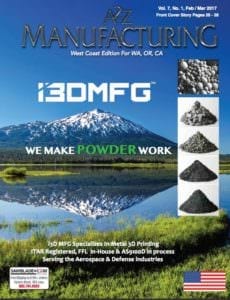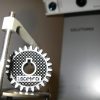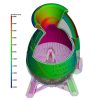As part of it’s AR1 booster engine project, Aeroject Rocketdyne put some 3D printed rocket parts under fire. The parts were subjected to a round of hot-fire tests in preparation for an AR1 engine production by 2019. Can 3D Printed parts hold up to such strenuous and exhaustive testing?
A little background. Aerojet Rocketdyne is currently developing the AR1 for full production. The AR1 is a 500,000 lb thrust-class liquid oxygen/kerosene booster engine which is an American-made alternative to the likes of the Russian built RD-180. Aerojet is preparing for the replacement of the RD-180 due to a new rule from the National Defense Authorization Act which was enacted in 2015 that calls for the replacement of the RD-180 for “national security space launches by 2019.”
Due to the function of a booster engine, these types of tests come at an important time for 3D metal printed parts. The industry is experiencing significant growth in the use of Inconel and Titanium metal powder printing which has yielded incredible results in not only the aerospace industry but in the firearms and medical industries as well.
In order to bring the AR1 to market by 2019, testing has to begin now and it’s an incredible amount of heat and stress they are placing these 3D metal printed parts under. The motivation for these hot-fire tests was an evaluation of various main injector element designs and fabrication methods.
A few of the injectors were fabricated using Selective Laster Melting (SLM) and Aerojet has invested heavily into the use of SLM capabilities for rocket engine applications.
Aerojet Rocketdyne fully believes that the AR1 single-element hot-fire tests are the highest pressure hot-fire tests (over 2,000 psi) of a 3D metal printed part in rocket engine application. Because of the success of these tests, Aerojet Rocketdyne says that 3D metal printing will account for a potential 70% reduction in cost for production of the main injector, and a possible nine-month reduction in part lead times.
So. Can 3D metal printed rocket parts hold up to extreme stress testing? Yes! And this is just the beginning of an upward trend as 3D metal printing using Inconel, Titanium, and Maraging Steel see massive success in other large industries such as firearms and medical. Stay tuned for your next 3D printed car….




